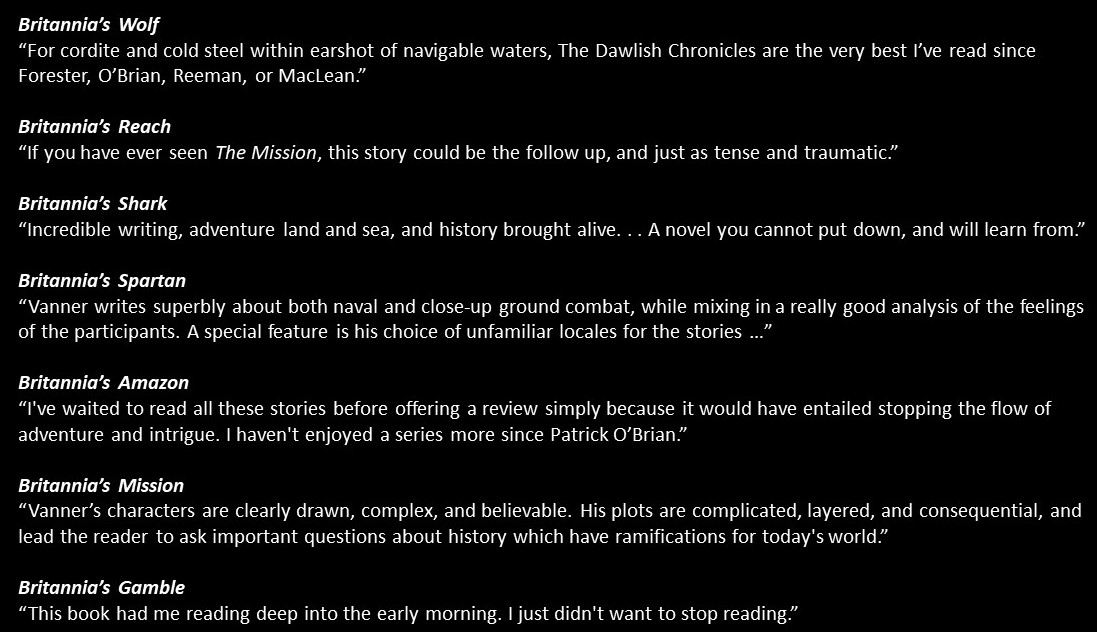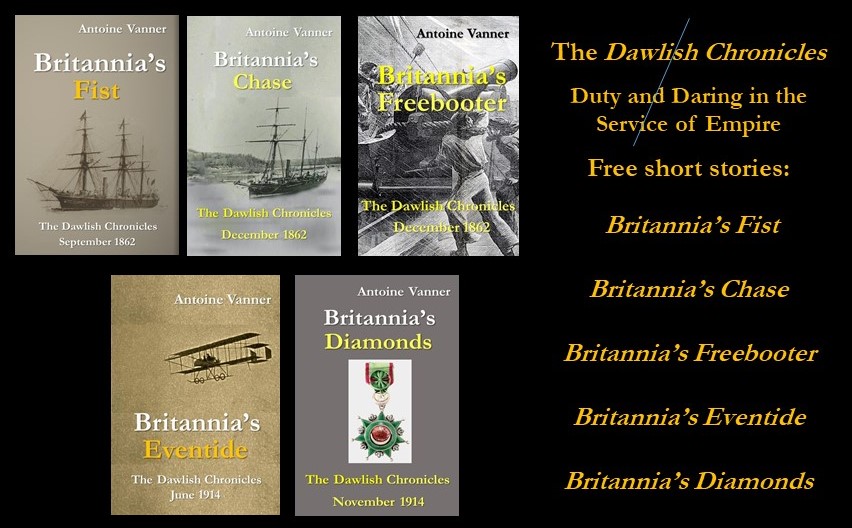Caulk’s Field: the Death of Captain Sir Peter Parker, 1814
The British attack on Baltimore in mid-September 1814, and the heroic defence of Fort McHenry, is one of the most widely remembered incidents of the War of 1812, since it was to inspire the writing of the American national anthem. It was however preceded by a British amphibious attack on the eastern shore of Upper Chesapeake Bay, directly across from the city, on August 31st. A force of seamen and marines were landed from a British frigate and were soundly beaten in an engagement known as the Battle of Caulk’s Field. At this remove the landing appears to be an unwise one that could have achieved little or nothing as regards the larger operation against the city.
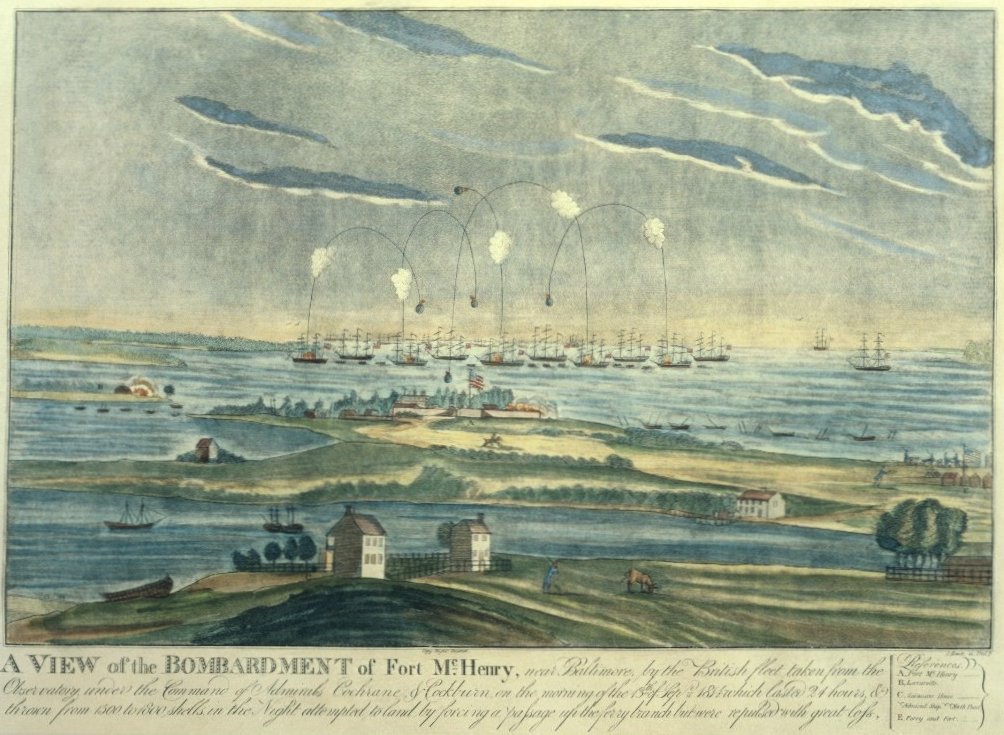 The attack on Fort McHenry – the inspiration for “The Star-Spangled Banner”
The attack on Fort McHenry – the inspiration for “The Star-Spangled Banner”
The Caulk’s Field battle did however result in the death of a young Royal Navy captain, Sir Peter Parker (1785-1814), and the manner of his passing was to be widely admired. The account that follows focusses on this, rather than on the battle. It draws heavily on Edward Giffard’s “Deeds of Naval Daring” (1852)and it casts light not only on the warmth of relations between enlisted seaman and admired officers, but on the discrepancies that arise between accounts from different sources, in this case British and American.

Parker – young, handsome and brave
Sir Peter Parker was the grandson of Vice Admiral John Byron (1713-1786), known as “Foul Weather Jack” and as such first cousin of Lord Byron. the poet. He had entered the navy in 1798 and by 1805 he was in command of the brig HMS Weazel which was the first British vessel to sight the enemy fleet exiting Cádiz prior to the Battle of Trafalgar. By 1810 he was not only a captain, but had been given command, at the age of 25, of the new frigate HMS Menalaus. His first duty was to provide assistance in suppression of a mutiny in the frigate HMS Africaine, after which he gave meritorious service in the Mediterranean and Indian Ocean. In 1813, with the “War of 1812” between Britain and the United States in full swing, the Menelaus was transferred to duties off the American eastern seaboard.
In August 1814 Parker was in the Upper Chesapeake with Menelaus and preparations were in hand for the British attack that would come a fortnight later. According to Giffard, Parker “received information from an intelligent black man that a body of militia were encamped behind a wood within sight of the ship.” Parker therefore decided on making a surprise landing, staging a night attack and storming the militia camp. He would lead the raid personally. Just before midnight on 30th August 1814 he landed a force of seamen and marines, some 140 in total and divided them into two groups headed by two of his Lieutenants, Crease and Pearce. He seems to have been well aware of just how dangerous – perhaps even foolhardy – the undertaking was and he wrote a short letter to his wife, as follows:
Menelaus, August 30, 1814
I am just going on desperate service, and entirely depend upon valour and example for its successful issue. If anything befalls me, I have made a sort of will. My country will be good to you and our adored children. God Almighty bless and protect you all!
Adieu, most beloved Marianne, Adieu!
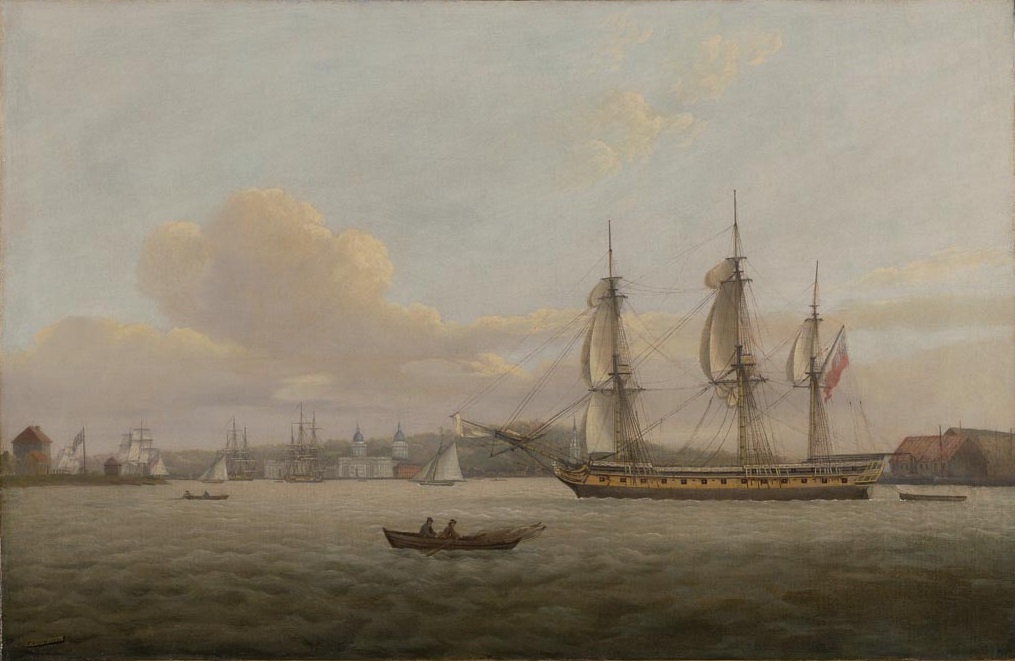
HMS Pomone a typical frigate of the time, which Menelaus would have resembled
(Painting by the by the great Thomas Luny)
Menelaus’s landing party captured several guards without apparently raising any great alarm and advanced in silence towards the militia camp. On arrival there they found that the enemy had moved. In strange country, and in darkness, discretion might have called for a return to the ship but Parker decided to press on. What followed was to be known as Battle of Caulk’s Field, near Fairlee. The naval force advanced some four to five miles only to find itself confronted by force of 500 militia, a troop of cavalry and five artillery pieces drawn up in line on a plain surrounded by woods. Faced with such superiority, Parker decided that his only hope lay in an immediate attack. “By a smart fire, and instant charge, the enemy was driven from his position, completely routed, and compelled to a rapid retreat behind his artillery, where he again made a stand; one of his guns was captured, but again abandoned. The attack was instantly renewed with the same desperate gallantry.”
It was at this point, as later reported in the London Gazette, that “while animating his men in the most heroic manner, that Sir Peter Parker received his mortal wound, which obliged him to quit the field, and he expired in a few minutes.”
Giffard stated that “The ball by which Parker fell entered his right thigh, and cut the main artery. On receiving his mortal wound he smiled, and said, “They have hit me, Pearce, at last; but it is nothing. Push on, my brave fellows, and follow me!” Cheering his men with undaunted heroism of spirit, that even his dying accents may be said to have been strains of triumph. The latter as enthusiastically returned his cheer. He advanced at their head a few paces further, when, staggering under the rapid flow of blood from his wound, he grew weak, fell into the arms of his Second Lieutenant, Mr. Pearce, and, faintly desiring him to sound the bugle; to collect the men, and leave him on the field, he finally surrendered, without a sigh or a pang, his brave spirit to the mercy of Heaven.”
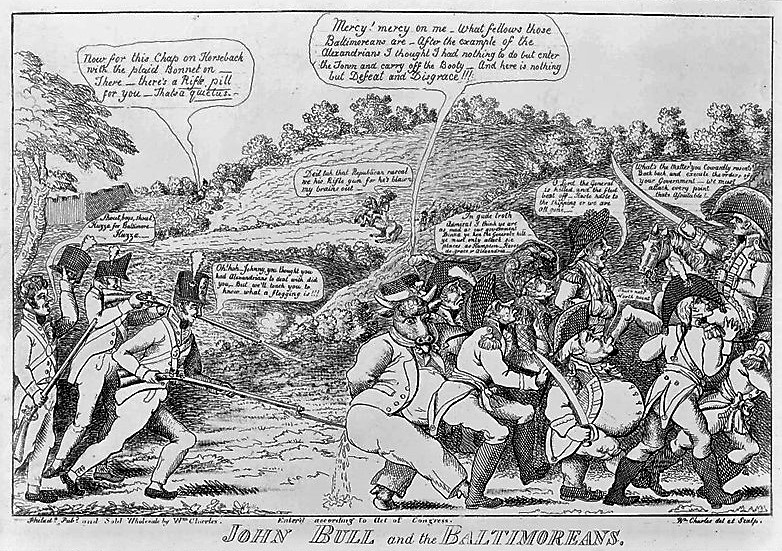
This cartoon conveys something of the American urge to resist the British. Note that John Bull is shown as a real bull!
A newspaper, the Boston Independent Chronicle, gave a different account on September 12, 1814 of Parker’s death. It estimated Parker’s force at between 200 and 300 – clearly too much to be landed from a single frigate. It attributed Parker’s wound to buckshot that hit him on the head as well as in the leg. (A son of a militiaman participant claimed later that his father had struck Parker down with by a ”blunder-buss loaded to the muzzle with all the hardware, bolts, nuts, nails, etc”). The newspaper reported five British dead, besides Parker, as well as five wounded, two of whom were to die. There appears to have been no American deaths and only three wounded.
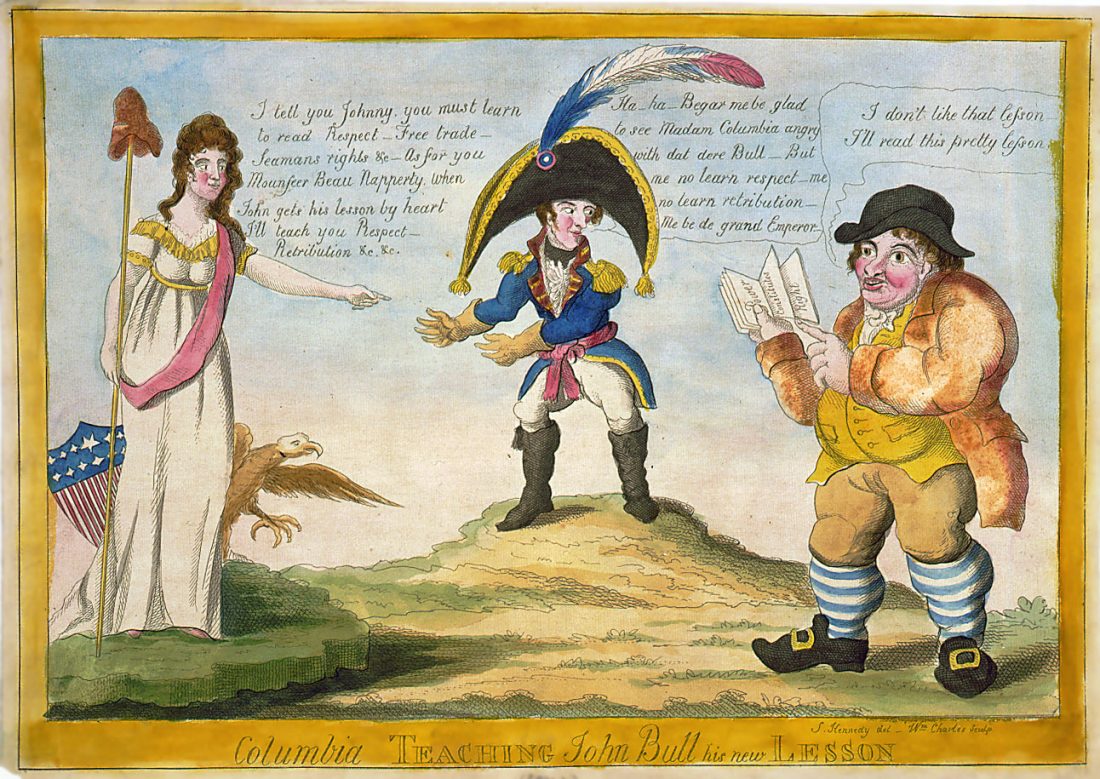
An American view of Britain during the War of 1812: Virtuous Columbia (l) admonishes the coarse John Bull (r) while Napoleon, in the middle, enjoys the spectacle
Retreat was now the only option for the Menelaus landing party. It was now that the Parker’s crew was to demonstrate the respect and affection that inspirational leaders so often earned from the lower deck. Several of “his men collected around his body, and swore never to deliver it up to the enemy but with their lives.” Lieutenant Pearce had them carry the body on their shoulders ”who, relieving each other by turns, thus bore off to the shore (a distance of five miles) the body of their fallen and beloved commander. One of these, William Porrell, seaman, evinced on this occasion a personal bravery and attachment to his Captain that would have done credit to any mind. This man was near Sir Peter when he received the fatal wound, and immediately ran to his assistance, and supported him in his arms until further help was procured. The men who bore him off were changed occasionally, but Porrell refused to quit the body a moment, and, unrelieved, sustained his portion of the weight to the shore. When it was suggested by some present that the enemy might rally, and cut off their retreat, he exclaimed, ‘No d —d Yankee shall lay a hand on the body of my Captain while I have life or strength to defend it.’”
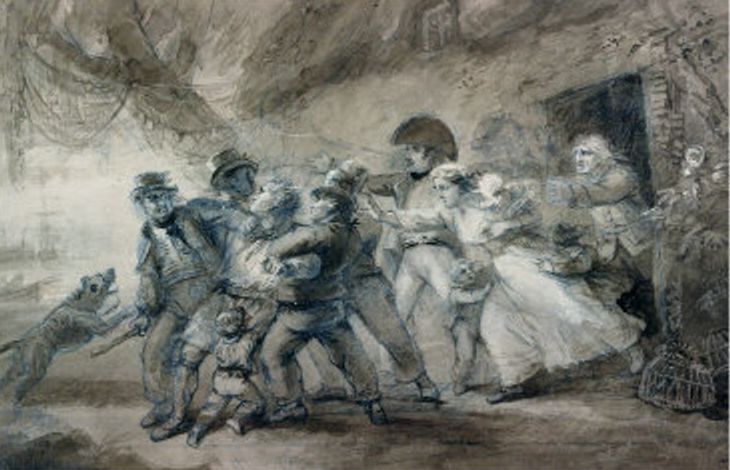
“The Press Gang” by Luke Clennell (1781 – 1840) – an institution often inaccurately understood. Regardless of how recruited, seamen’s loyalty to admired officers was always high.
Porrell was not the only seaman to display remarkable resolution at Caulk’s Field. A twenty-four year old, James Perring, had been seriously wounded early in the action. In considerable pain he urged his companions to leave him and advance, swearing that “he would never become the prisoner of a Yankee. He subsequently crawled to a tree, against which, in great agony, he seated himself, with his cutlass in one hand and his pistol in the other.” He was found by the Americans after dawn when “finding the British had retreated, (they) returned to the field of battle for the humane purpose of collecting the wounded.” Perring was clearly dying and they summoned him to surrender. “He answered, no American should ever take him alive. They assured him they only wanted to carry him off to the hospital. He persevered in refusing to receive succour from He was told, if he refused giving up they must fire on him. Collecting his strength, he exclaimed “Fire away, be d-d! No Yankee shall ever take me alive; you will only shorten an hour’s misery!” The Americans respected the heroism of this brave young man, and left him unmolested to die on the field.”
Parker’s body was sent home and was subsequently interred at the family vault at St Margaret’s, Westminster (the separate church adjoining Westminster Abbey), and the eulogy was delivered by his first cousin, Lord Byron. One wonders what would not subsequently have lain in the future for this dashing young frigate captain who was struck down at Caulk’s Field at the age of twenty-nine.
Do you enjoy naval fiction?
If you’re a Kindle Unlimited subscriber you can read any of the seven Dawlish Chronicles novels without further charge. They are also available for purchase on Kindle or as stylish 9 X 6 paperbacks.
Click on the banner below for more details:
Click here for an 8-minute video in which Antoine Vanner talks about Britannia’s Mission
Extracts below from recent readers’ reviews on Amazon.com
